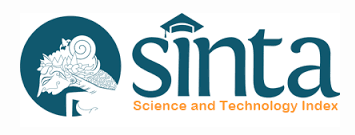MUSLIM TIONGHOA SEBAGAI LIYAN DALAM KONSEP UKHUWWAH ISLAMIYAH
Abstract
Tionghoanesse moeslem is part of Tionghoa’s ethnic, but instead of known as a Tionghoa, they do not know as a part of moeslem community. During the Orde Baru era, the Tionghoa’s having a repression from government. Back than they were forced to be ‘Indonesian’ with various total assimilation programs. While Tionghoa’s ethnic become minority and was being repressed, the Tionghoanesse moeslem community was being more repressed. As we know, the Tionghoa’s moeslem community is a minor people on minority group, so they are having a double difficulty to face Indonesia’s social and cultural costum.
During the reformation era, government withdrawing the rules that suffers them, in this era Tionghoa’s ethnic having their own freedom to express them self and having their own Tionghoa’s identity. PITI Surabaya, as an organization which collecting Tionghoa’s moeslem community in Surabaya, has various ways to break the stigma about Tionghoa’s moeslem community. Although, PITI Surabaya has tried various ways to show their exsistence but, the discrimination on them are still on the way until today.
The focus on this paper is how PITI Surabaya with all their various ways in reducing discrimination can survive the contestation on their identity’s construction and discrimination among other moeslem’s community in Surabaya.
References
Alasuutari, Perrti. 1999. Rethinking the Media Audience. London: Sage Publication
Ang, Ien. 1991. Desperately Seeking the Audience, London/New York: Routledge. Ang, Ien. 2000. “”Identity blues.”In Without guarantees: In honour of Stuart Hall, edited by Paul Gilroy, Lawrence Grossberg, and Angela McRobbie, 1-13. London: Verso. Ang, Ien. 2005. On Not Speaking Chinese: Living Between Asia and the West. London & New York: Routlege.
Ang, Ien. 2003. “Together-in-Difference: Beyond Diaspora, into Hibriditas”. Asian Studies Review. Vol. 27. No.2.
Budianta, M. (2004) Identitas dalam masyarakat multibudaya [Identity in multicultural society]. In H. Soesastro, J. Kristiadi and A. Priyadi (Eds). Budi dan Nalar: 70 Tahun Harry Tjan Silalahi [Knowledge and thoughts: 70 year old Harry Tjan Silalahi] (Jakarta, Centre for Strategic and International Studies), pp. 601–612.
Chua, Christian. 2004. “Defining Indonesian Chineseness under the New Order”. 3 Volume 34. Journal of Contemporary Asia.465-79.
Chunjiang Fu, Choo Yen Foo, Yaw Hoong Siew. 2005. The great explorer Cheng Ho. Ambassador of peace. Asiapac Books
Dawis, Aimee. 2010. Orang Indonesia Tionghoa : Mencari Identitas. Gramedia, Jakarta
Kathryn, Woodward. 2002. Identity and Difference. Sage Publication
Kennedy, Hugh. 2007. The Great Arab Conquest. Da Capo Press
Lindsey, T. 2005. Chinese Indonesians: Remembering, distorting, forgeting. Singapore: Institute of Southeast Asian Studies.
PITI Surabaya. 2008. Sekilas tentang Masjid Muhammad Cheng Hoo: cetakan ke – 8. Yayasan Masjid Muhammad Cheng Hoo
Retnaningsih, H. 2012. “Tahun baru Imlek dan upaya pembauran di Indonesia.” Info singkat kesejahteraan sosial. Vol. IV, No. 02/II/P3DI/Januari/2012
Sumber Lain
Disertasi Liliek Soelistyo. 2015. RESEPSI ORANG TIONGHOA TERHADAP TAYANGAN KETIONGHOAAN DI LIMA STASIUN TELEVISI SWASTA, Kajian Budaya dan Media, Sekolah Pascasarjana Universitas Gadjah Mada
Encyclopedia Jakarta
Kumpulan Peraturan Perundangan dalam Instruksi Presiden Republik Indonesia
Laman batik dan blogspot.com diakses pada 12 Agustus 20017
Undang-undang
Zheng He dalam Wikipedia
Once an article was published in the journal, the author(s) are:
granted to the journal right licensed under Creative Commons License Attribution that allows others to share the work with an acknowledgment of the work's authorship. permitted to publish their work online in third parties as it can lead to wider dissemination of the work. continue to be the copyright owner and allow the journal to publish the article with the CC BY license receiving a DOI (Digital Object Identifier) of the work.





